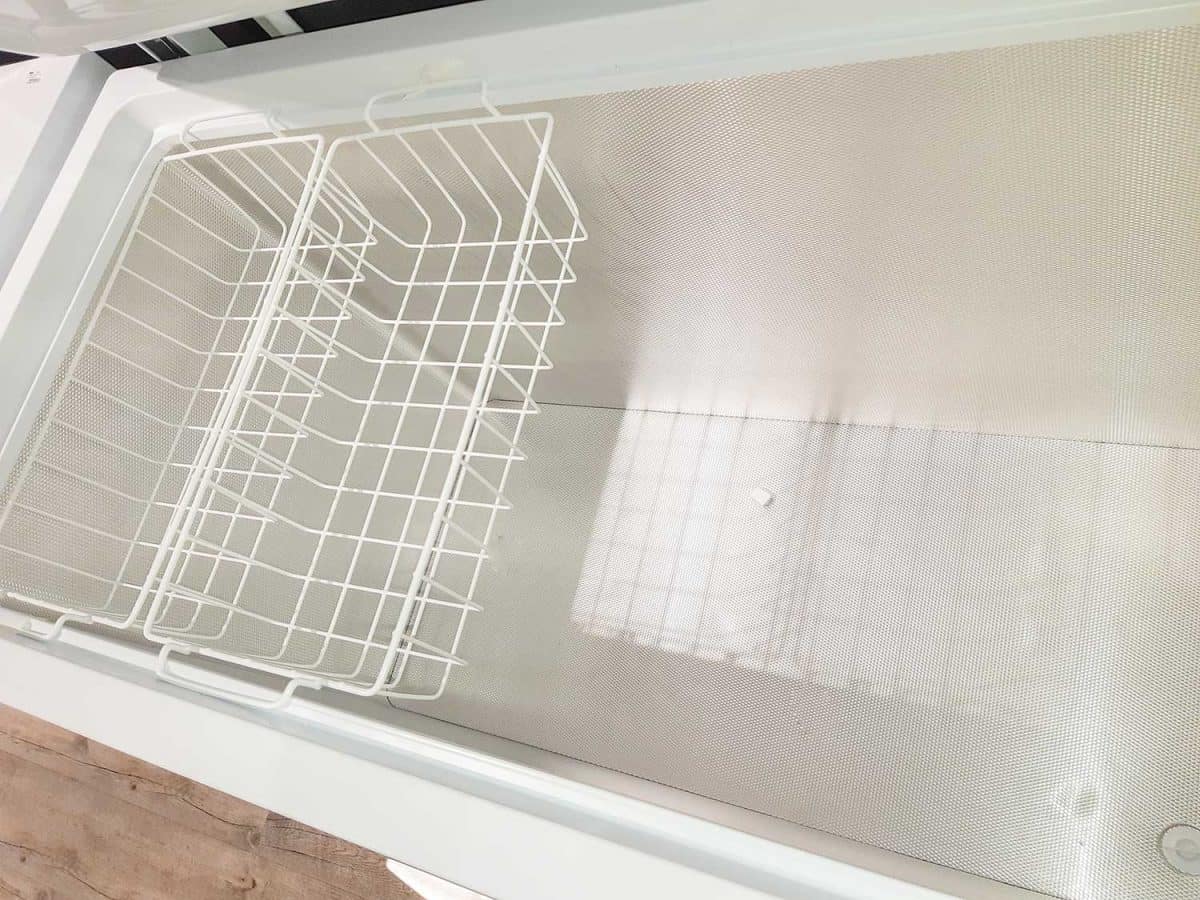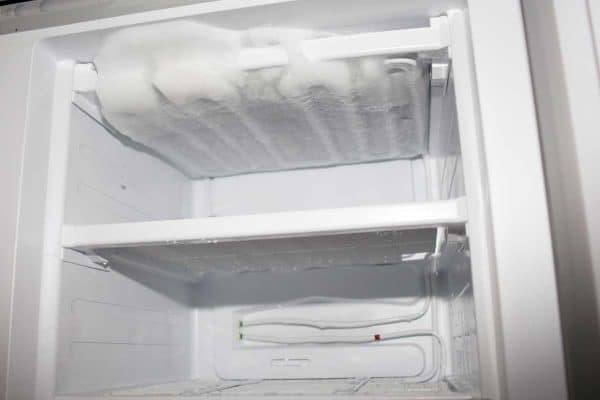Owning a chest freezer gives you more space to place food and drinks in, but the maintenance required may vary from a traditional refrigerator freezer. Although most chest freezers are frost-free, there are instances where you will still need to defrost them. But how long does it take for them to defrost? We've asked for insight from the experts and summed them up in this post.
The time it takes for a chest freezer to defrost depends on the model you own. Usually, it would take about 24 hours when the ice is thick. Chest freezers often require manual defrosting, so it generally involves waiting. If you let the ice melt away naturally, give the freezer a whole day to cool down completely. For less frost buildup, it could take as little as 2 hours.
When maintaining a chest freezer, it's also vital to know about the defrosting cycle and different methods to approach it. Keep reading as we delve into these topics, including why you should defrost a chest freezer and what happens during the process.
NOTE: WE MAY GET A COMMISSION IF YOU DECIDE TO MAKE A PURCHASE THROUGH THESE LINKS. THERE'S ADDITIONAL NO COST TO YOU. CHECK THE BOTTOM OF THE PAGE FOR MORE INFORMATION.

How Do You Defrost A Chest Freezer Quickly?
Chest freezers take a day to cool down when you let them thaw on their own. This method is the simplest because it only requires you to unplug the freezer and keep the lid open, but it also takes up the most time. However, there are other ways to help speed up the process. These include the following:
1. Placing A Bowl Of Hot Water Inside
Take a bowl of boiling water and place it in the center of the chest freezer after unplugging the appliance, then keep the freezer closed. It creates steam, allowing the ice inside to melt quicker. Change the water to a freshly heated batch every 10 minutes or so.
Note that the bowl should not directly touch the freezer since it could cause warping from the heat. Put a damp towel under the bowl to keep the heat from affecting the freezer's interior.
2. Scraping The Ice Off
You can take an ice scraper, spatula, or spoon to scrape off the frost from the freezer. This method relies more on removing the ice instead of melting it away. It effectively shortens defrosting time but could damage the freezer if it is not done carefully.
When using this method, you can wait for the ice to soften before you scrape them off. Dealing with harder blocks of frost poses a risk to both you and the freezer. To avoid these, let the ice melt for a bit until it is soft enough to scrape without too much force.
3. Wiping The Freezer With A Hot Towel
Another method you can consider is the hot towel method, wherein you soak a towel into hot water and wipe around the areas with frost. The heat from the towel and wiping movement will cause the ice to melt quicker.
Before you start wiping on the ice, be sure you let the warmth settle first. Repeat the steps mentioned earlier until the frost defrosts completely. If necessary, replace the bowl of hot water with a freshly heated batch.
Do Chest Freezers Have A Defrost Cycle?

Compared to upright freezers, chest freezers do not have a defrost cycle, which refers to a freezer system recognizing the formation of frost and fixing it. A chest freezer does not use a separate fan assembly, as found in most refrigerators and upright freezers. Instead, frost-free models are available for options that lower ice buildup.
Chest freezers are also ideal for the long-term storage of frozen food since they do not have a defrost cycle to avoid automatic thawing processes. And so, they maintain the quality of stored food by consistently keeping them frozen.
Where Does The Water Go When You Defrost A Chest Freezer?
Most chest freezers come with a drain, usually found at the bottom rim inside the freezer. Some of these drains will have a hose attachment to help release the water. Keep in mind that not all chest freezer models will have a drain plug, so examine the freezer for a drain before defrosting.
Insulation in a chest freezer is susceptible to mold growth when wet. If you're handling a freezer that does not have a drain, a defrosting method you can consider is scraping off the ice. Doing this will reduce the amount of water that melts into the freezer, allowing you to dry it easier.
How Long After Defrosting A Freezer Can I Put Food Back In?

You can put food back in a chest freezer when it reaches the desired temperature. After defrosting, it will take about 30 minutes to cool and 4 to 12 hours to maintain the proper temperature.
According to the FDA, food is safe in a freezer at a temperature of 0 degrees Fahrenheit. As much as possible, wait for the freezer to achieve this temperature before storing the frozen food inside. One way to test if the freezer is cold enough is by placing an ice cube tray with fresh water and waiting for it to freeze.
If you're dealing with a newer chest freezer, read our post: How Long Does A New Chest Freezer Take To Freeze?
How Often Do You Have To Manually Defrost A Chest Freezer?
Most manufacturers suggest regularly defrosting a chest freezer every 6 to 12 months or when the frost buildup is over 1/4 inches thick. The freezer's usage affects how frequently ice collects in the freezer. Opening it often increases the chances of ice formation, so defrost it every 3 to 4 months.
If you have a self-defrost freezer model, consider manually defrosting it to save on energy costs. You can also check out manual defrost chest freezers since they take up 40 percent less energy than self-defrost models. These are also better for extended storage because it keeps food frozen until you defrost it yourself.
For further discussion on chest freezer defrosting, read through our post on How Often To Defrost A Chest Freezer.
What Happens If You Don't Defrost Your Chest Freezer?

Freezer maintenance includes defrosting to keep them functioning in their best condition. Allowing too much frost to collect in a chest freezer will cause an increase in energy consumption because it works harder to keep cold. When this happens, it also wears out the freezer system.
Another reason to defrost a chest freezer is that frost buildup takes up large spaces that can be used for food instead. Chest freezers are known for their large storage capacities. Unlike refrigerators, they usually don't get rid of ice on their own. So when too much ice forms, it cuts down the amount of food you can store at once.
Frost buildup causes further damages to the freezer system itself. Chest freezers usually don't have a heating coil and temperature sensor to prevent frost accumulation. It's crucial to defrost them when necessary to keep them working efficiently.
In Summary
Chest freezers commonly require manual defrosting because of the way they are built. They don't have automatic defrost cycles to keep food frozen for longer periods. It would take up to 24 hours to defrost manually, but you can shorten this through different defrosting methods.
Regardless of which steps you take to get rid of frost buildup, you should regularly defrost a chest freezer for maintenance purposes. Experts recommend defrosting a chest freezer once to twice a year and frequently when signs of ice formation come up. For proper food handling, letting the freezer cool to the right temperature is essential before resuming storage.



![Woman hand open plastic white container drawer in new refrigerator. How To Put A Freezer Drawer Back In [Inc. For Specific Brands]](https://forfreezing.com/wp-content/uploads/2021/09/Woman-hand-open-plastic-white-container-drawer-in-new-refrigerator.-How-To-Put-A-Freezer-Drawer-Back-In-Inc.-For-Specific-Brands-600x400.png)